As summer comes to a close and temperatures begin to cool, many gardeners are ready to shift their focus from the bright blooms of summer to the more muted tones and textures of fall. Fall plants bring a unique beauty to gardens, adding a final flourish of color before winter sets in. In this article, we will explore the best plants for fall, tips on how to care for them, and ideas on how to create a garden that thrives throughout the autumn months.
Why Choose Fall Plants for Your Garden?
Fall plants are specifically chosen for their ability to thrive in cooler weather and shorter days. As temperatures drop, many summer-blooming plants begin to fade, but fall plants take center stage, bringing color, texture, and vibrancy to the garden. There are several benefits to incorporating fall plants into your landscape:
- Extending Garden Interest: By adding fall plants, you extend the beauty of your garden into the autumn months, ensuring there is something to enjoy even as the days get shorter.
- Low Maintenance: Many fall plants are hardy and low-maintenance, requiring less watering and care than summer plants. They thrive in cooler temperatures and are often more drought-resistant.
- Attracting Pollinators: Certain fall plants, like asters and coneflowers, continue to attract bees, butterflies, and other pollinators, providing vital food sources before winter.
- Seasonal Color: Fall plants provide warm, rich hues like red, orange, yellow, and deep purples, which create a cozy and inviting garden atmosphere.
Best Fall Plants to Grow in Your Garden
If you’re looking to add some seasonal color to your garden, these are some of the top fall plants that will flourish and provide interest during autumn.
1. Chrysanthemums (Mums)
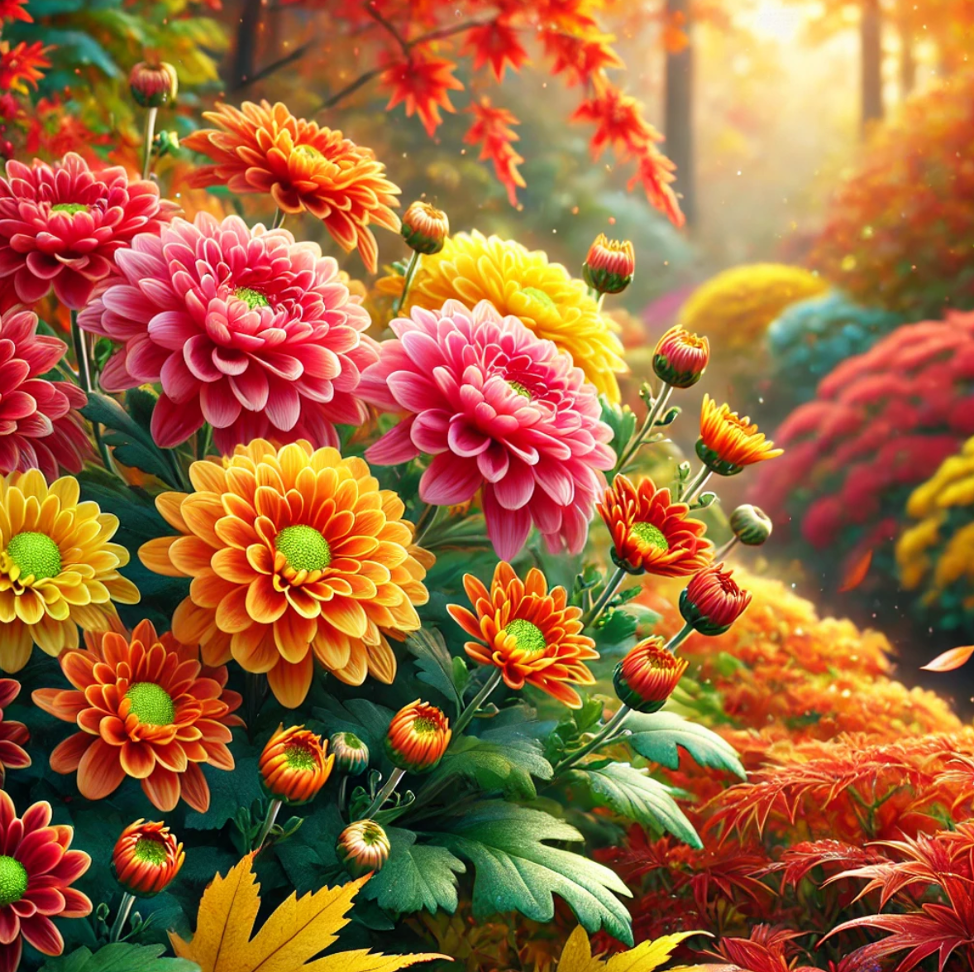
Chrysanthemums, or mums, are the quintessential fall flower. Known for their vibrant blooms in colors ranging from red, orange, and yellow to pink and purple, mums are a must-have for any autumn garden. Their ability to withstand cooler temperatures makes them a perfect choice for brightening up the garden as summer flowers fade away.
Care Tips:
- Light: Full sun is ideal for mums.
- Soil: Well-drained soil with a neutral pH.
- Watering: Keep the soil consistently moist but not soggy.
2. Asters

Asters are another autumn favorite. With their daisy-like blooms in shades of blue, purple, pink, and white, they are a striking addition to fall gardens. Asters attract pollinators such as bees and butterflies, helping your garden remain lively even as the weather cools.
Care Tips:
- Light: Full sun to partial shade.
- Soil: Well-drained, loamy soil.
- Watering: Regular watering is important, especially during dry periods.
3. Sedum (Stonecrop)
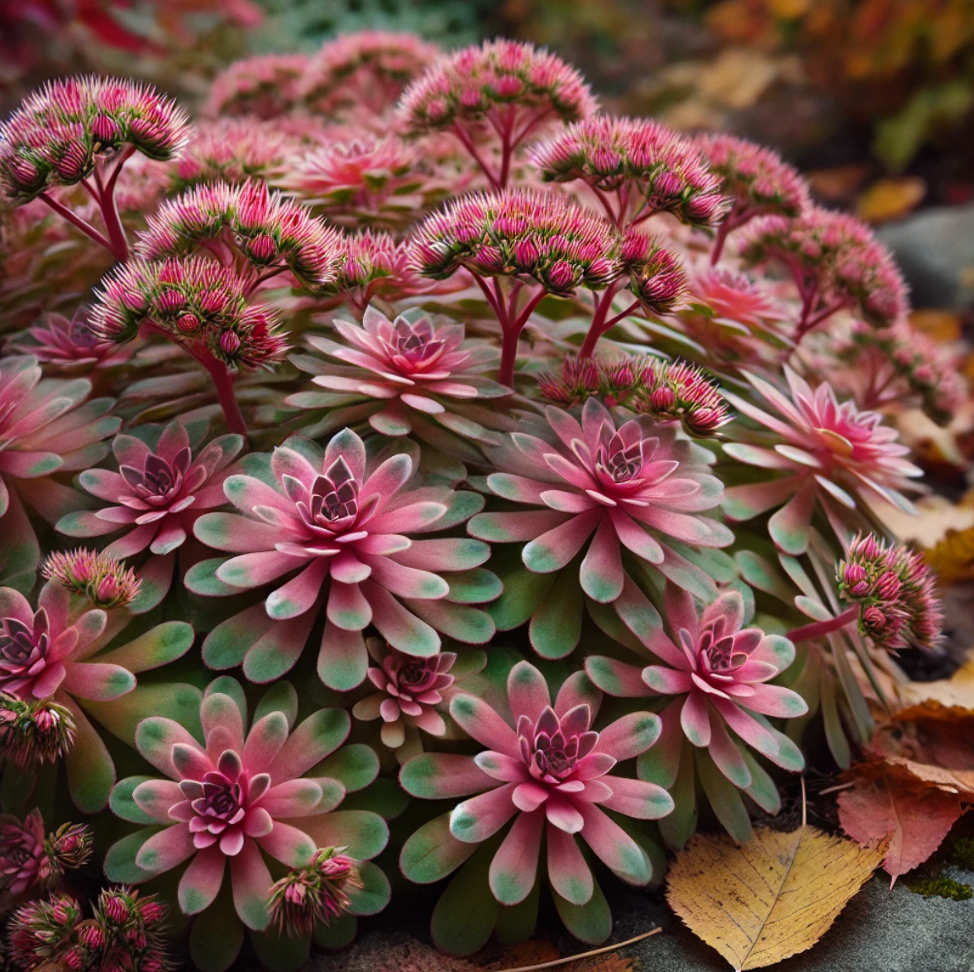
Sedum is a tough and hardy succulent that thrives in the fall. Its thick, fleshy leaves store water, making it drought-tolerant, and its star-shaped flowers add texture and interest to any garden. Sedum varieties such as ‘Autumn Joy’ bloom in late summer and continue through fall with flowers in shades of pink and burgundy.
Care Tips:
- Light: Full sun.
- Soil: Well-drained, sandy or gravelly soil.
- Watering: Minimal watering; allow the soil to dry between watering sessions.
4. Coneflowers (Echinacea)
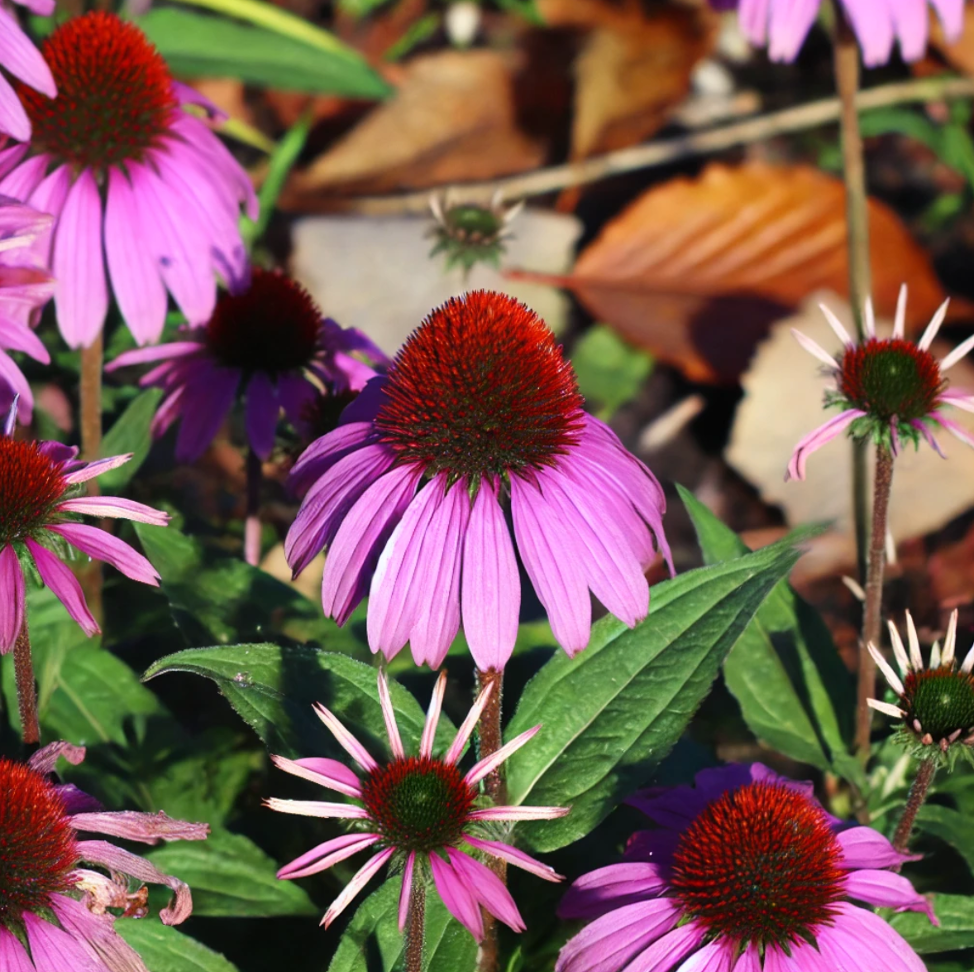
Coneflowers are a fantastic perennial for fall gardens. With their signature cone-shaped centers and bright, vibrant petals in shades of purple, pink, and white, coneflowers bloom late into the fall. They are not only deer-resistant but also attract pollinators like bees and butterflies.
Care Tips:
- Light: Full sun.
- Soil: Well-drained soil, tolerant of poor soil conditions.
- Watering: Drought-tolerant once established; water regularly during dry spells.
5. Russian Sage (Perovskia)
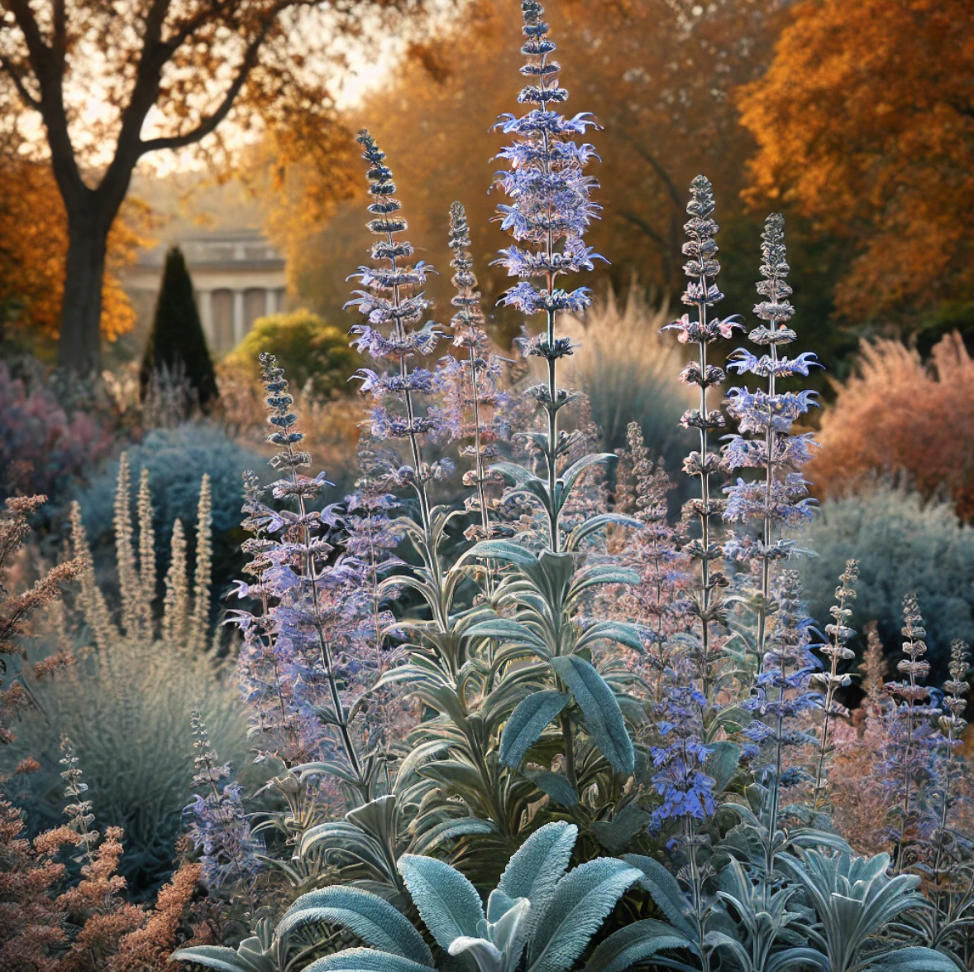
Russian sage is a fall garden favorite for its tall, airy stems and delicate lavender-blue flowers. The silvery-green foliage complements the rich autumn colors of mums and asters, and it’s highly resistant to both drought and deer, making it a low-maintenance choice.
Care Tips:
- Light: Full sun.
- Soil: Well-drained, sandy soil.
- Watering: Water sparingly; it’s drought-tolerant once established.
6. Japanese Anemones

Japanese anemones bring a graceful elegance to fall gardens. Their tall, slender stems and delicate white, pink, or pale purple flowers bloom from late summer into fall. They provide height and a soft, romantic feel to the garden.
Care Tips:
- Light: Partial shade to full sun.
- Soil: Moist, well-drained soil.
- Watering: Regular watering to keep the soil moist.
7. Ornamental Grasses
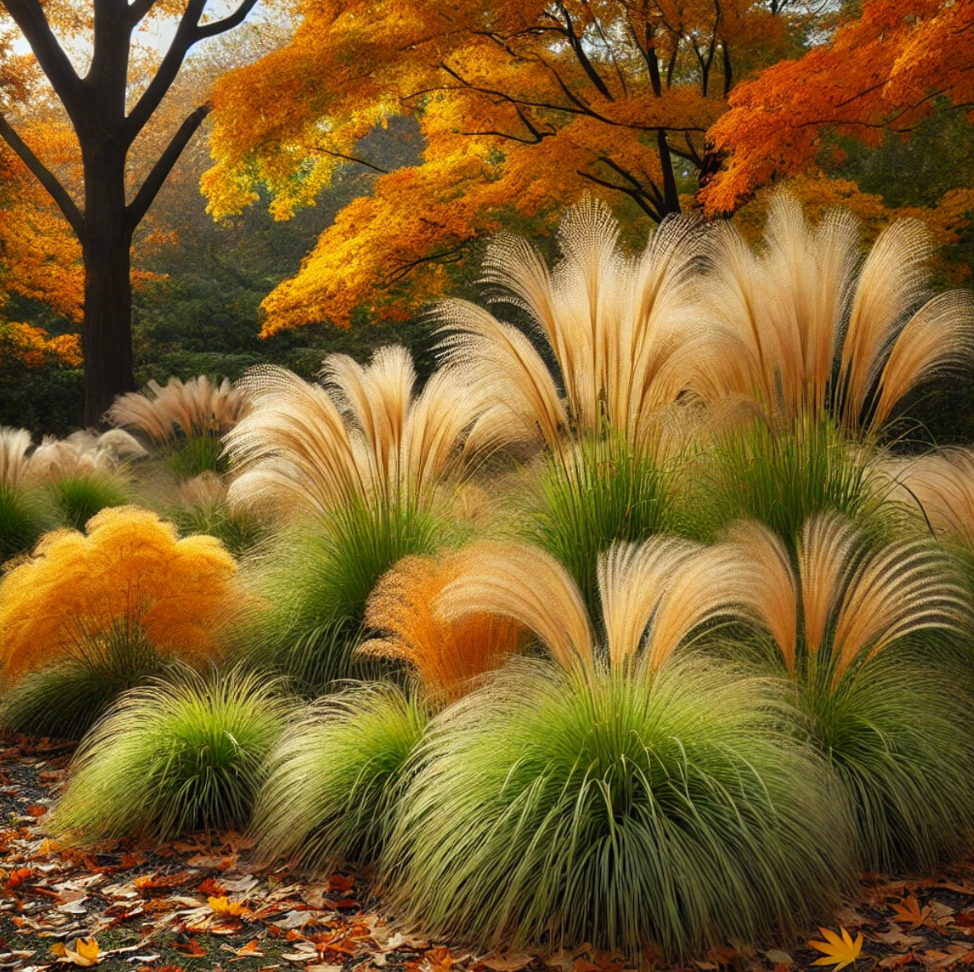
Ornamental grasses provide texture and movement to fall gardens. Varieties like switchgrass, fountain grass, and miscanthus produce tall plumes that sway in the breeze, adding a dynamic element to the landscape. In addition to their visual appeal, they also require minimal care and provide structure to the garden through the winter months.
Care Tips:
- Light: Full sun.
- Soil: Well-drained soil.
- Watering: Drought-tolerant, requiring little water once established.
8. Pansies

Pansies are one of the few annuals that can survive cool fall temperatures, even blooming well into the early winter months in some regions. With their cheerful, bright faces in shades of yellow, purple, and blue, pansies add a pop of color to garden beds and containers.
Care Tips:
- Light: Full sun to partial shade.
- Soil: Well-drained soil.
- Watering: Water regularly, keeping the soil moist.
Designing Your Fall Garden
To create a fall garden that stands out, it’s important to focus on the right combination of plants and textures. Here are some tips for designing a stunning autumn garden:
1. Layered Planting
Incorporate plants of varying heights to create depth and visual interest. Taller plants like Russian sage and ornamental grasses can form the backdrop, while shorter plants like mums and pansies fill in the front.
2. Mix Textures
Combine different leaf and flower textures to add contrast. The soft plumes of ornamental grasses pair beautifully with the sturdy blooms of mums and the delicate flowers of Japanese anemones.
3. Use Containers
If you have limited garden space, consider planting fall flowers in containers. Mums, pansies, and ornamental grasses thrive in pots and can be placed on porches, patios, or garden steps to bring fall color closer to your living spaces.
4. Add Fall Foliage
Don’t forget the beauty of fall foliage! Adding trees or shrubs that change color in the fall, such as maples or burning bushes, will enhance the overall autumnal feel of your garden.
5. Plant for Pollinators
Many fall plants, such as asters, coneflowers, and sedum, attract pollinators, ensuring that your garden remains full of life through the season. Planting pollinator-friendly flowers also helps support local ecosystems.

